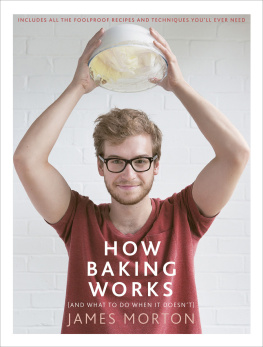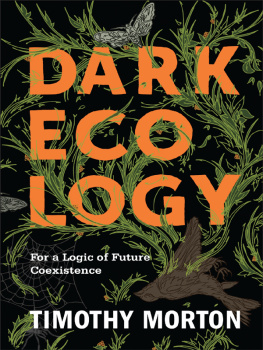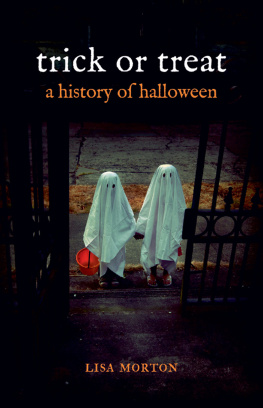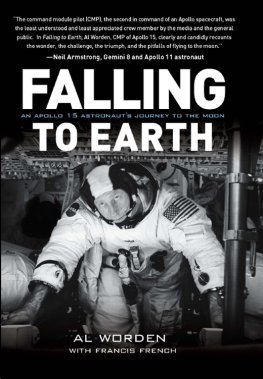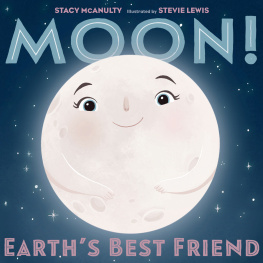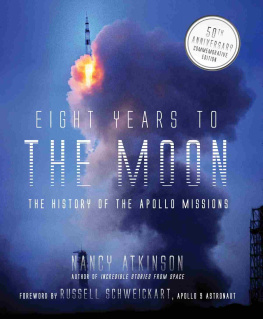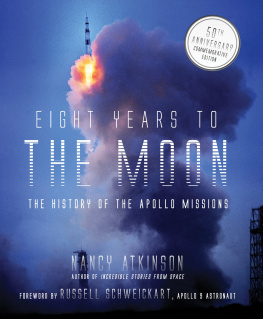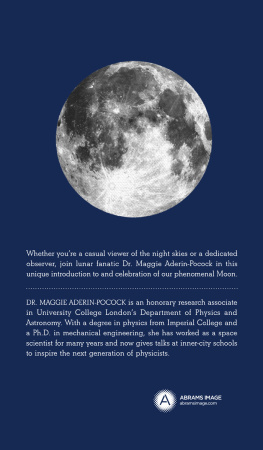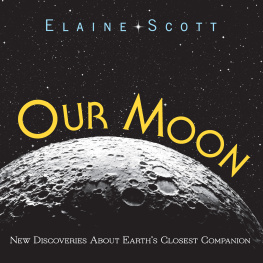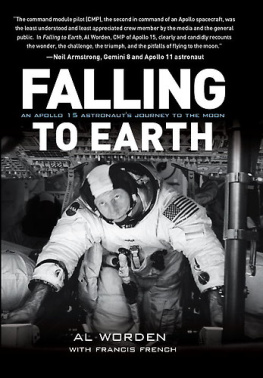PRAISE FOR THE MOON
The Moon is such a fascinating object in human history. From its dominance in our neighboring sphere, to its romantic impetus, to its symbol of national stature, to its position as a mere stepping stone to greater exploits, the Moon has been omnipresent in the human sky. And no book about the Moon that Ive ever read captures the multifaceted nature of the Moon as does Oliver Mortons The Moon. As impressive as the subject matter he deals with is the quality of Oliver Mortons writing. Whether describing the clockwork of the lunar cycle or the history of the Moons influence in human affairs, Mortons writing is clear, incredibly informative, and flows like poetry. A truly delightful and informative read.
RUSTY SCHWEICKART, lunar module pilot, Apollo IX
A multidisciplinary triumph, combining a deep understanding of science fiction and myth with accurate, up-to-date lunar science and space technology.
DAVID MORRISON, founding director, NASA Lunar Science Institute
Beautifully written: evocative, witty, and truly informative. I thought I knew a lot about the Moon but I nonetheless learned all sorts of fascinating new things, and thoroughly enjoyed myself doing so. Combining science and science fiction is not easy and Oliver Morton manages it seamlessly and brilliantly! Superb.
ADAM ROBERTS, author of The Palgrave History of Science Fiction and The Thing Itself
A hymn to the Moon. I cant think of a wiser, more eloquent or better-informed companion for a journey around our natural satellite than Oliver Morton, whose poetic prose displays a breadth of knowledge not often found in science writing.
ROGER HIGHFIELD, director of external affairs, the Science Museum Group
Our Moon, a spherical bit of unchanging inanimate rock, nonetheless captivates us with its romance and its beauty. Its tantalizing almost deceptive proximity makes it also a destination, both a past one and a promising one for the future. In this poetically written and informative book, Oliver Morton takes us through all aspects of this very familiar but very foreign territory, which has inspired stories and study for decades. What a remarkable achievement and one well worth exploring.
LISA RANDALL, Frank B. Baird Professor of Science, Harvard University
THE MOON
THE MOON
A HISTORY FOR THE FUTURE
OLIVER MORTON

Published under exclusive licence from The Economist by
Profile Books Ltd
3 Holford Yard
Bevin Way
London WC1X 9HD
www.profilebooks.com
Copyright The Economist Newspaper Ltd, 2019
Text copyright Abq72Ltd, 2019
Cover design: Sinem Erkas
Cover image: iStock
Vintage engraving showing a scene from the Jules Verne novel De la terre la lune
All rights reserved. Without limiting the rights under copyright reserved above, no part of this publication may be reproduced, stored in or introduced into a retrieval system, or transmitted, in any form or by any means (electronic, mechanical, photocopying, recording or otherwise), without the prior written permission of both the copyright owner and the publisher of this book.
No responsibility can be accepted by the publisher or author for the accuracy of the information presented.
Where opinion is expressed it is that of the author and does not necessarily coincide with the editorial views of The Economist Newspaper.
While every effort has been made to contact copyright-holders of material produced or cited in this book, in the case of those it has not been possible to contact successfully, the author and publisher will be glad to make any necessary amendments in further editions after receipt of written notification.
The publisher is not responsible for websites (or their content) that are not owned by the publisher.
A CIP catalogue record for this book is available from the British Library.
ISBN 9781788162548
eISBN 9781782835462
To John Loft, my uncle,
John Hynes, my father-in-law,
and John Morton, my brother
beloved all
Her antiquity in preceding and surviving succeeding tellurian generations: her nocturnal predominance: her satellitic dependence: her luminary reflection: her constancy under all her phases, rising and setting by her appointed times, waxing and waning: the forced invariability of her aspect: her indeterminate response to inaffirmative interrogation: her potency over effluent and refluent waters: her power to enamour, to mortify, to invest with beauty, to render insane, to incite to and aid delinquency: the tranquil inscrutability of her visage: the terribility of her isolated dominant resplendent propinquity: her omens of tempest and of calm: the stimulation of her light, her motion and her presence: the admonition of her craters, her arid seas, her silence: her splendour, when visible: her attraction, when invisible.
JAMES JOYCE, Ulysses

How many more times will you remember a certain afternoon of your childhood, some afternoon thats so deeply a part of your being that you cant even conceive of your life without it? Perhaps four or five times more. Perhaps not even. How many more times will you watch the full moon rise? Perhaps twenty. And yet it all seems limitless.
PAUL BOWLES, The Sheltering Sky

Are we going to lunch? Or are we going to the Moon?
RIP VAN RONKEL, ROBERT A. HEINLEIN AND JAMES OHANLON, Destination Moon
CONTENTS
LIST OF ILLUSTRATIONS
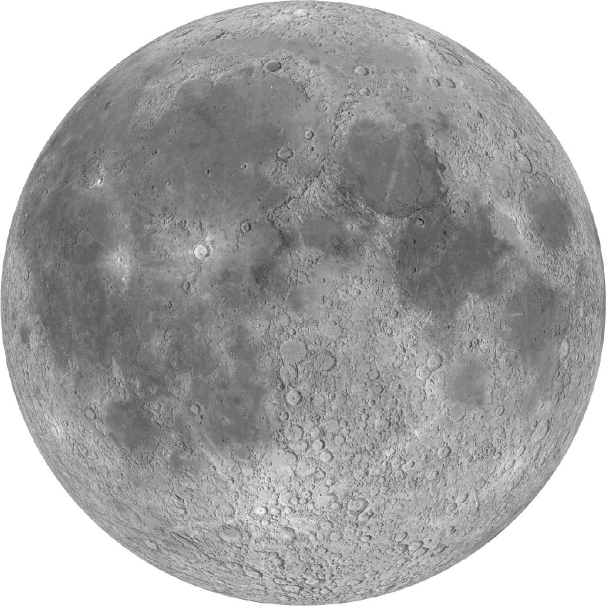
THE NEARSIDE
INTRODUCTION
STRAWBERRY MOON
June 19th 2016, San Mateo County, California
THE CALIFORNIA SKY WAS WARM AND BLUE, ITS LIGHT STILL bright but softening. Shadows lengthened across dry grass towards San Francisco Bay as the train trundled south. In London, though, it was four in the morning, and it was in London that I had started my day. I was a third of a planet from home and I was tired.
I had come to Silicon Valley to talk to people about space and technology. In preparation, my head resting against the window of the carriage, I was reading a scientific paper on places where one might site a moonbase. I was not taking in the arguments all that well, but I was impressed by their breadth. The papers Moon was mapped by laser, camera and radar, the shadows in its craters and sunlight on its peaks modelled by computers, its minerals assayed using electromagnetic radiation of every frequencyand neutrons, to boot. The data were as varied in source as in type; some came from Chandrayaan-1, Indias first lunar mission, launched in 2008; some from NASAs Lunar Reconnaissance Orbiter, which was launched the following year and had, six years later, sent its handlers a startling 630 terabytes of data. Some were older: from the Soviet Unions Lunokhod rovers, from Americas Apollo landings, from the Lunar Orbiter missions that had paved the way for them.
From the range and weight of this material came pros and cons for various possible locations; a communications relay here is better than one there, this crater is more easily traversed than that one, the richer thorium deposits there do not make up for the more favourable solar power conditions here, and so on. The paper was not just making a case for this spot on the rim of Peary, a crater near the North Pole, versus that spot between Shackleton and Sverdrup, near the South. It was a performancea demonstration to a world in general little interested in the Moon that, now all this detail was available, this was the sort of argument people could and should be having.
Next page

